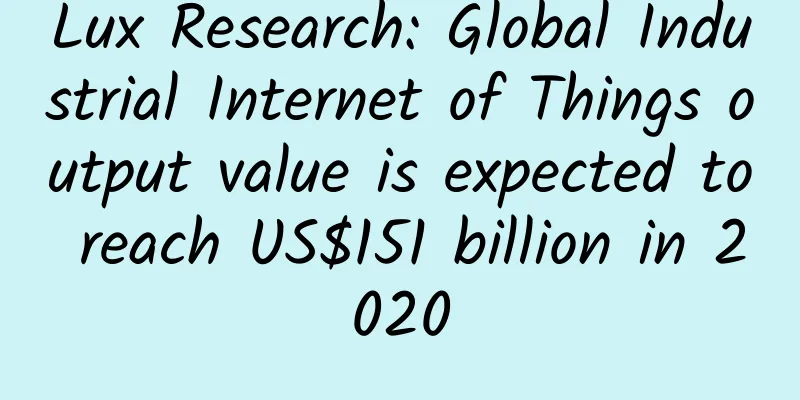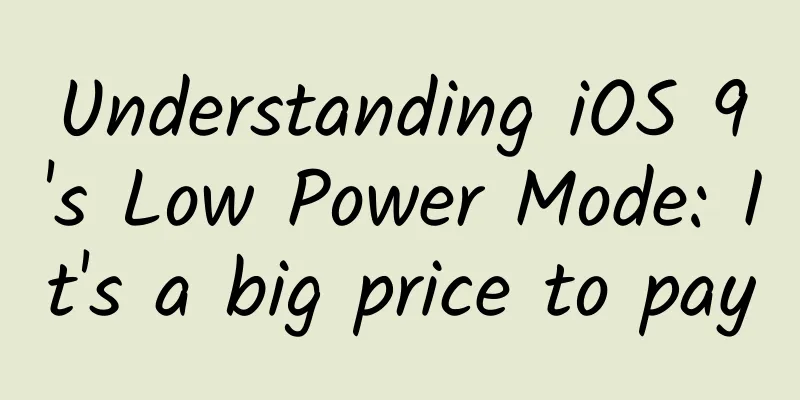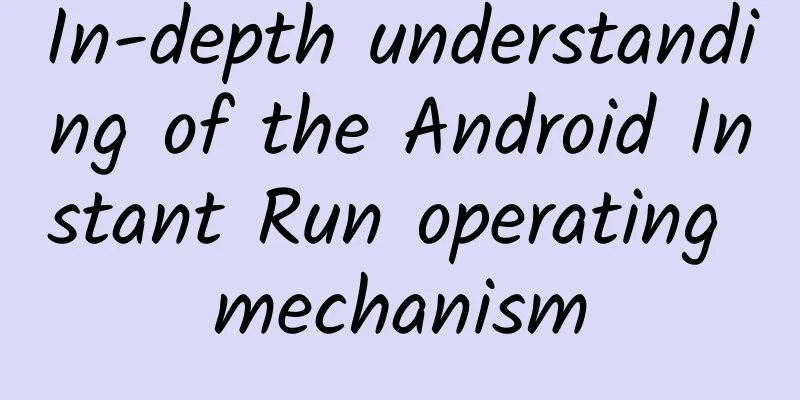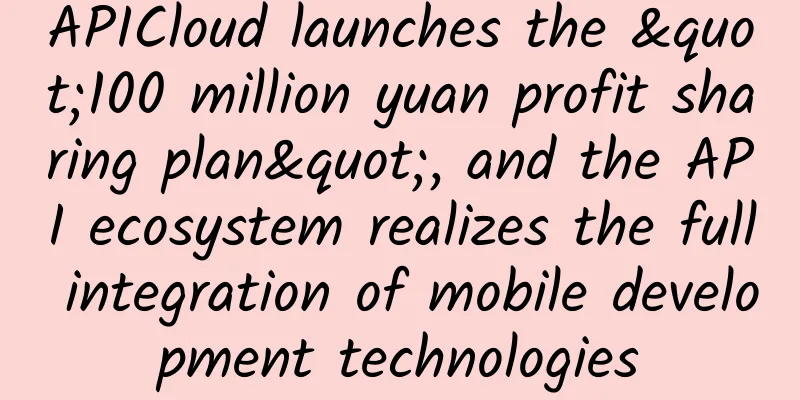Lux Research: Global Industrial Internet of Things output value is expected to reach US$151 billion in 2020

|
The Internet of Things is becoming more and more popular, especially the Industrial Internet of Things. Although there are many startups in the Internet of Things industry, it is not easy to find the right products and directions. Lux Research, a data analysis company in Boston, released an Internet of Things industry report in January this year. Model data showed that by 2020, the global industrial Internet of Things output value will reach US$151 billion. Issac Brown is an analyst at the company. In an interview, he said that the data in the report is still conservative. In his personal opinion, the Industrial Internet of Things will be the most promising investment direction and will reach a trillion-dollar market size in five years. "There is one thing that is certain about the market: it is huge." Issac Brown said that since many data models are based on estimates, it is actually impossible to accurately estimate the future market capacity. "Let's look at sensors first. Based on the data from the recently released report, we have recorded all the predictions for the future global sensor market. Everyone's predictions are different, and everyone has a different definition of sensors." The application scenarios of the Industrial Internet of Things are very broad. For example, data from water and electricity utilities, car driving data, agricultural irrigation data, and other data from all walks of life must be recorded. In order to support the transmission and storage of this data, you may need various servers, satellites, ultra-low power wireless LANs, traffic transmission services, etc., which may add up to billions of dollars in costs every day. Currently, most of this data is stored on the factory company's own servers. For cost, convenience and value considerations, using cloud servers to store IoT data will gradually become popular. Brown said that enterprise-level cloud storage is the first market he is optimistic about. The second is the one-stop data processing platform for the Internet of Things. "We need so-called IoT platforms. Thousands of IoT startups and several large IoT companies will develop new IoT platforms to provide customers with data storage and analysis services." "Then we have hundreds of analysis and operation service providers providing big data processing services to customers. At the same time, both dealers and system integrators will benefit from it. After the outbreak of the Industrial Internet of Things, there will undoubtedly be countless outsourcing service providers who will package all the products and services mentioned above together and sell them as a service to create value and charge fees." He also believes that the future Industrial Internet of Things market can be divided into three independent parts: equipment tracking, environmental monitoring, cargo tracking, and personnel tracking. When asked about the proportion of these parts, Brown said that he has not yet modeled it, but based on his intuition in the industry, in the next five years, equipment tracking will account for 35% of the output value, environmental monitoring will account for 30%, cargo tracking will account for 20%, and personnel tracking will account for 15%. However, these categories are not completely separated. He cited the example of FedEx, which needs to track all its assets, equipment, goods, personnel, and environmental monitoring. "You can monitor vehicle status, weather conditions, locate goods in warehouses, and track drivers through networking." Brown believes that equipment tracking and environmental monitoring will have the greatest potential. For security and timeliness, more and more business owners want to network old systems or use new IoT systems, and many companies have already started to take action. He also mentioned that in industrial production, monitoring the production environment in order to save energy and improve production is not new. In fact, these technologies are already quite developed in the field of industrial IoT. At the same time, logistics and cargo tracking systems will be another huge market, and there are already many mature solutions in cluster and warehouse management. In the consumer and medical fields, allowing everyone to access the Internet also "undoubtedly has unlimited potential." However, he also pointed out that although this is also a key area of the industrial Internet of Things, the market capacity is still relatively small in the near future. "Some people have already started to take action, not only wearable augmented reality devices, but also wearable devices that ensure the safety of construction workers are also growing in shipments." Regarding the current dynamics of venture capital, Brown said he has noticed several investment cases. Institutional investors prefer "early pure IoT platforms", such as Electric Imp and IoT data analysis tool mnubo. "These companies' products are widely applicable and have huge market space, so they successfully raised funds from investment institutions, but in my opinion, the value of these universal keys is not that great." Brown prefers narrow-category products. "If the startup's field is narrower and the industry pain points to be solved are clearer, there may be a greater chance of attracting the attention of large companies and getting investment." Brown cited the example of Sigfox, a company that uses narrowband transmission technology to design a dedicated transmission network for the Internet of Things, which can replace cellular communication technology. Although it also needs to set up base stations like mobile phones, the cost is lower and the number of devices supported is larger. For example, the user's hardware cost is as low as $1, and the annual communication fee can be reduced to as low as $1. Of course, there are disadvantages, that is, the transmission rate is low, and the fastest speed is only 100bps, but this is enough for many IoT scenarios. Another obvious advantage is ultra-low power consumption, which is one percent of the power consumption of traditional cellular communications. Because this technical solution makes up for the shortcomings of mobile phone networks, it has great application prospects in the future and has obtained investment from many mobile communication companies in France. The amount of financing reached 100 million euros in early 2015. |
<<: Rumor has it that 1haodian chairman Yu Gang and CEO Liu Junling have resigned
>>: CEO goes to heaven, where is Nintendo on earth headed?
Recommend
Segment your users and how to conquer them one by one?
Today, we will talk about practical techniques fo...
Immortal Master Chief Chinese Edition "Halo: The Master Chief Collection" Review
Microsoft's Xbox One has been in China for al...
The secret of user “planting grass” in Xiaohongshu’s promotion method!
I believe that many of these cuties are “little r...
LeEco and Xiaomi once again staged a mutual attack: full-scale PK with multiple breakthroughs
LeTV and Xiaomi, two Internet companies that clai...
Introduction to comic line drawing for beginners
This course will teach you how to draw line drawin...
At what degree of myopia will there be a risk of blindness?
One minute with the doctor, the postures are cons...
Hprose for Node.js 1.6.0 released
Hprose is an advanced lightweight cross-language ...
Lesson 8 of CTO Training Camp: See what happened to these founders and partners in their startups?
[51CTO.com original article] Starting a business ...
Heavy rain blue warning! Heavy rain and thunderstorms in Beijing, please take precautions →
Beijing Meteorological Observatory issued a blue ...
Companionship growth training camp
Companion Growth Training Camp Resource Introduct...
What role does advertising play in the three processes of operation?
Recently, this advertisement of "999 Cold Re...
Foshan WeChat mini program distribution function, how much does it cost to develop a mini program distribution system?
Distributing mini programs is the future developm...
TikTok Distribution: What are the distribution techniques for TikTok?
In an era where traffic is king, if there is stil...
Forget to take off contact lenses when sleeping, eyeballs turn white and you may go blind! What should you pay attention to when wearing contact lenses?
Recently, a 23-year-old man in Jinan, Shandong fo...
10 Misconceptions About Marketing Promotion!
In 2020, risks and opportunities coexist. From th...









